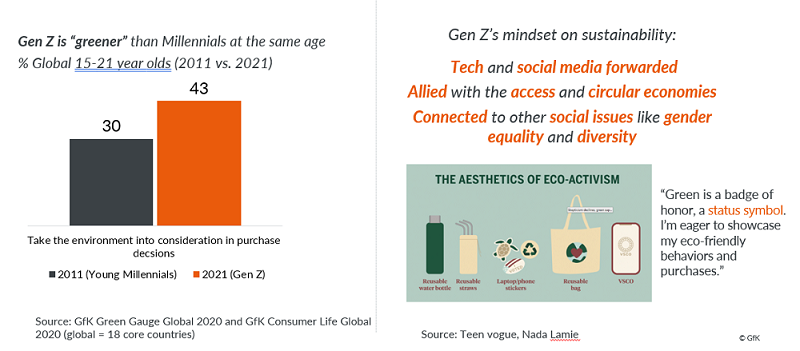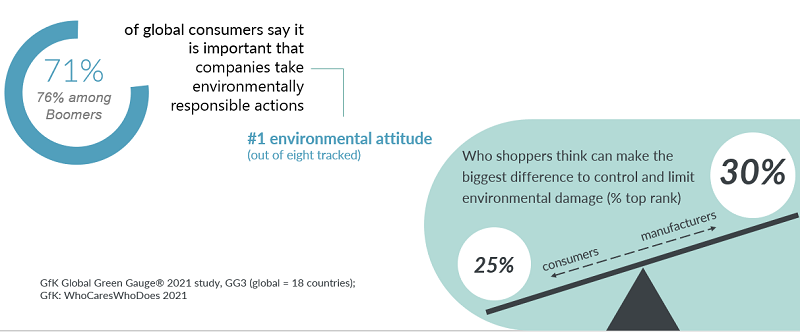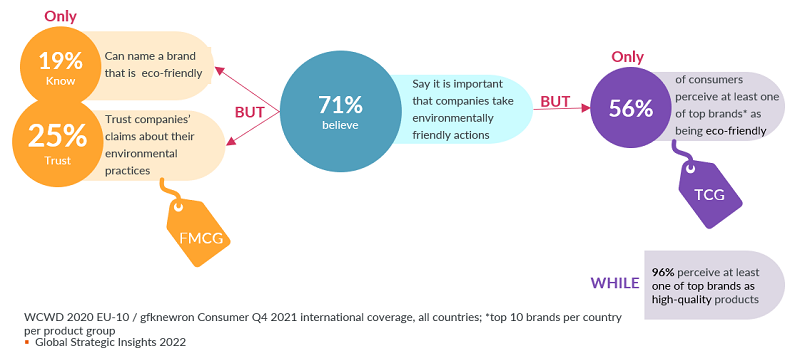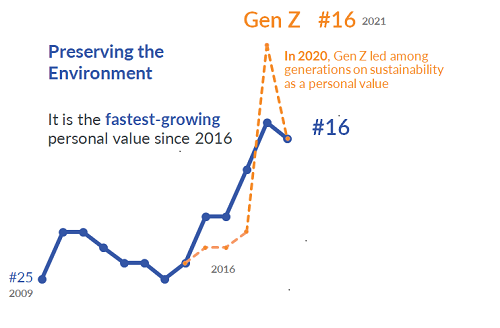Climate change denial is fading fast among global consumers, yet one form of environmental skepticism remains a persistent problem for brands – doubts about their sustainability claims.
Even as shoppers increasingly consider the environment in their purchase decisions and call on manufacturers to act more sustainably, they are wary of ‘greenwashing’ and unclear on which brands are genuinely making a difference.
Here we examine this gap in trust and brand awareness and ask what brands can do to overcome it.
Consumers increasingly value sustainability
Just a decade ago, more than one in five global consumers were climate change skeptics or at least cynical about the environmental movement. But as extreme heatwaves, floods and wildfire exact an increasingly heavy toll on communities worldwide, consumer focus on climate change has grown steadily. Today almost nine out of 10 consumers (88%) have a green attitude and want to buy sustainable and brands´products, even if some struggle to afford them.
In fact, preserving the environment was one of the fastest-growing personal values for global consumers between 2016 and 2021. It is now prized above material security, having fun and leisure in a list of 57 personal values ranked by the 35,000 people in 25 countries who took part in our most recent GfK Consumer Life Global survey.

Eco-activism cuts across wealth barriers, with young consumers leading the way
Gen Z, the cohort born in the mid-1990s onwards, is blazing the trail with green values and acting on them too – 43% of consumers aged 15 to 21 say they take the environment into consideration in purchase decisions compared to just 30% of Millennials when they were the same age a decade ago.
Meanwhile, consumers aged 18 to 24 are three times more likely to switch brands based on values than those aged 65 or older, making sustainability essential for the future success of brands.
Global youth drives sustainability

Despite the current climate of falling consumer confidence, sustainability remains appealing to both affluent and cost-conscious buyers, making efforts towards sustainability a valuable assets for increasing brand equity. All consumers will increasingly be looking for energy-saving products that will save them money, given the global energy crisis that has driven up living costs in many parts of the world.
Alongside the consumers who remain cynical about sustainability, consumers fall into four camps, placing priority on sustainability for different reasons:
Glamour Green: The largest consumer segment (46% and growing), these people wear sustainability as a badge of honor and are eager to showcase eco-friendly behaviors and purchases even if they don’t hold the deepest eco-convictions.
Green Indeed: These knowledgeable consumers are active in thought and action and will complain via social media and word-of-mouth about products that do not meet expectations
Carbon Cultured: These people have pro-environmental attitudes but rarely take on ‘harder’ behaviors
Green In Need: These consumers want to be more environmentally active but struggle for economic reasons or a lack of know-how.
Zoomers, Boomers and regulators expect manufacturers to act
With environmental protection now table stakes, there is mounting pressure on brands to set an example. The high expectations come not just from Gen Z – the so-called Zoomers – but also their grandparents, with 76% of Baby Boomers around the world saying it is important that companies take environmentally responsible actions, compared with an average of 71% across all generations.
Just a quarter of consumers think they can make the biggest difference to control and limit environmental damage. More consumers (30%) believe it’s manufacturers that wield the power to effect change.
Environmental action is now table stakes for brands

Alongside consumer scrutiny, manufacturers can expect to feel growing pressure from major regulators such as the European Commission, whose European Green Deal proposes to boost circular business models for physical goods and ensure consumers are better protected against greenwashing brands. The French government has already introduced a Repairability Index, mandating the display of clear information on the repairability of electrical and electronic equipment. And New York lawmakers have approved a Digital Fair Repair Act aiming to give consumer access to parts, tools and information to repair their personal electronics. Brands with weak circular economy principles will increasingly be penalized by legislators.
‘Greenwashing’ is a key risk to valuable brand equity
When it comes to eco-credentials that are not well substantiated or articulated, however, consumers are simply not buying it.
Our research shows that a mere 25% of consumers trust the claims of fast-moving consumer goods (FMCG) brands about their environmental practices, for example. This trust gap is exacerbated by an awareness gap – only 19% of consumers can name an FMCG brand that is eco-friendly.
A similar lack of awareness is seen with premium technical consumer goods (TCG). When consumers are given the names of the top 10 TCG brands in their respective countries, almost all consumers (96%) perceive at least one of the brands to offer high-quality products. Yet only 56% perceive at least one as being eco-friendly, showing that brands’ sustainability efforts are not sufficiently cutting through.
The sustainability gap: Awareness and trust remain key challenges

Innovation and communication: four ways to win green credibility
- Provide evidence, not just claims: To improve brand awareness and credibility in an era of information overload and a sea of green claims, marketers need to be more explicit about the sustainability of their products and be ready to evidence their claims. Sharing data about the impact of sustainability improvements, and then translating it into relatable statistics, can help to add weight to claims.
- Link sustainability to cost savings: In these times of tightening household budgets, messaging should emphasize cost-saving benefits that will appeal even to climate skeptics such as durability, repairability, energy efficiency and low absolute energy consumption over the product’s lifecycle.
- Think circular: Brands should start thinking now about how to incorporate circular economy principles throughout the product lifecycle. One in five global consumers, and more than one in four Millennials, have bought a tech product because it contained recycled components, while 36% of consumers have purchased items with recycled packaging and plan to continue to do so. Manufacturers and retailers that drive sustainable innovation through the full value chain and clearly articulate it will win favor from consumers and stay ahead of regulators.
- Craft messages for individual products: Corporate efforts to reduce the carbon footprint of an entire business are often too abstract to resonate with consumers. To bridge the awareness gap, companies are better off talking about their products one by one, establishing a clear link in the consumer’s mind between each item and its sustainability credentials. Over time this will elevate their perception of the brand as a whole.
Sustainability will only become more important to consumers in the future, making it imperative that brands continue to improve the sustainability of their products. Brands also have work to do to persuade consumers that they are serious about sustainability. Taking a broader view of sustainability up and down the value chain will become more important in coming years, as will communicating persuasively with consumers to demonstrate commitment. Greenwashing won’t work on today’s savvy consumers.
![]()



